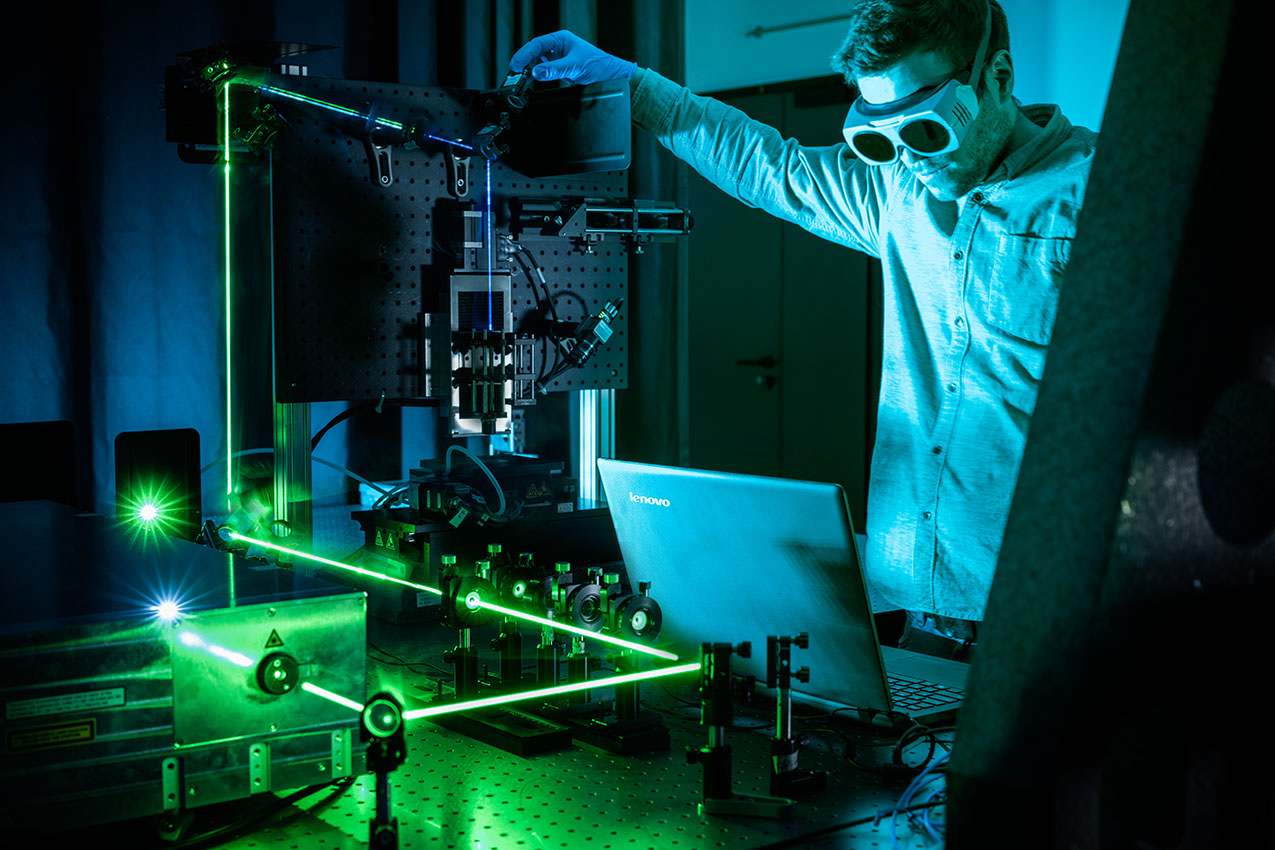
The Technische Universität Braunschweig welcomes its first Alexander von Humboldt Professor, Daniel Prades. The Spanish expert in nanophotonics will receive the most highly endowed research award in Germany, worth five million euros. As an established top researcher, he will further strengthen Braunschweig as a centre of science from 2024 and in particular provide new impetus for the region's strong research into nano and quantum sensors.
In the ATIQ project, 25 partners are developing ion trap-based quantum computer demonstrators together with future users. Applications include quantum chemistry and finance. Within 30 months, ATIQ aims to create the first generation of reliable, user-friendly and round-the-clock quantum computer demonstrators based on ion trap technology.
The MicroPhotonicsLab (MPL) at the Laboratory for Emerging Nanometrology LENA comprises eight funded devices. The new laboratory structure will make it possible to combine various semiconductor components such as waveguides and laser diodes on one chip. This will enable various photonics research groups to merge their expertise within a few millimetres. This brings the goal of a scalable quantum computer in Quantum Valley Lower Saxony a big step closer.
In order for quantum computing to solve problems, you not only need a functioning quantum computer – you also need to be able to calculate with it. With QuBRA and ProvideQ, the Technische Universität Braunschweig is involved in two projects that aim to research the practical benefits of the computing power of quantum computers. The focus here is on the "NP-hard" problems that are characteristic of the most critical optimisation issues. Sooner or later, the effort required for the necessary algorithmic calculations grows so dramatically that it becomes practically impossible to determine optimal solutions. The hope here is that quantum computers, such as those currently being developed in Quantum Valley Lower Saxony, will be able to push the limits of the impossible a good deal further.
The key component in the architecture of a quantum computer is the potential to scale up the system from a few dozen to a million qubits or more. The QuMIC (Qubits Control by Microwave Integrated Circuits) project is researching new types of highly integrated (BiCMOS) computer chips at high frequencies and their hybrid integration with quantum electronics (ion trap and superconducting chips) to create compact multi-chip modules. The cooperation's novel BiCMOS chips are intended to reduce the size of the control electronics of quantum technologies such as ion trap computers by a factor of eight.
Professor Stefanie Kroker has received a Consolidator Grant of almost two million euros from the European Research Council (ERC). Kroker and her research group at TU Braunschweig are investigating optical resonators, the components that make laser systems the most precise instruments available. This key technology thus also enables regional collaborative projects such as the Cluster of Excellence QuantumFrontiers or the Quantum Valley Lower Saxony (QVLS) to achieve the highest precision.